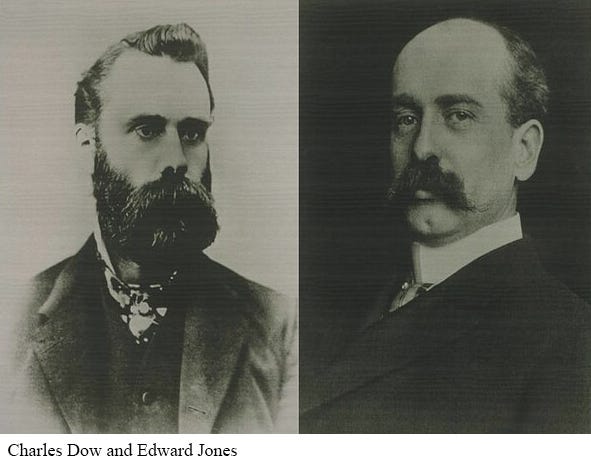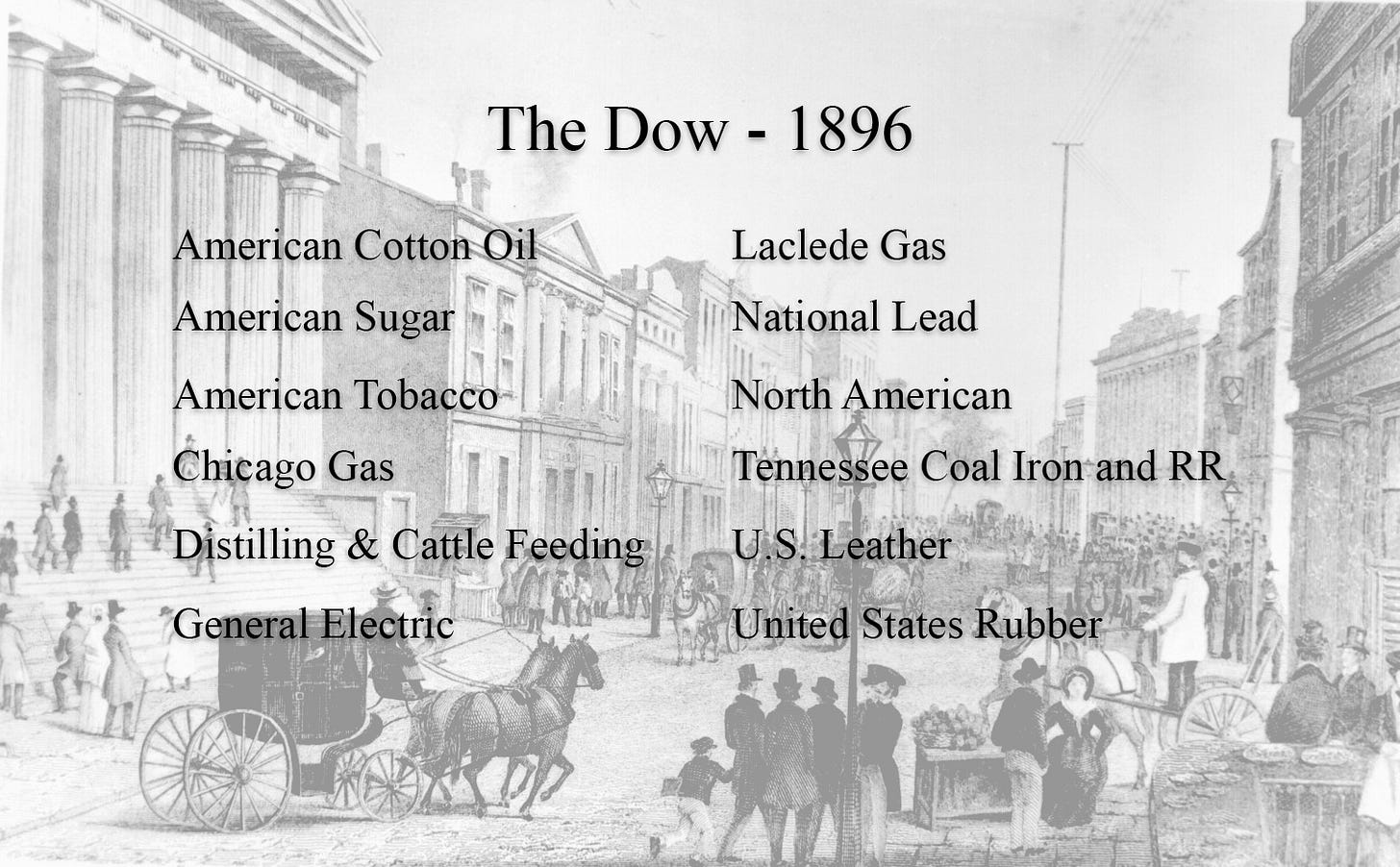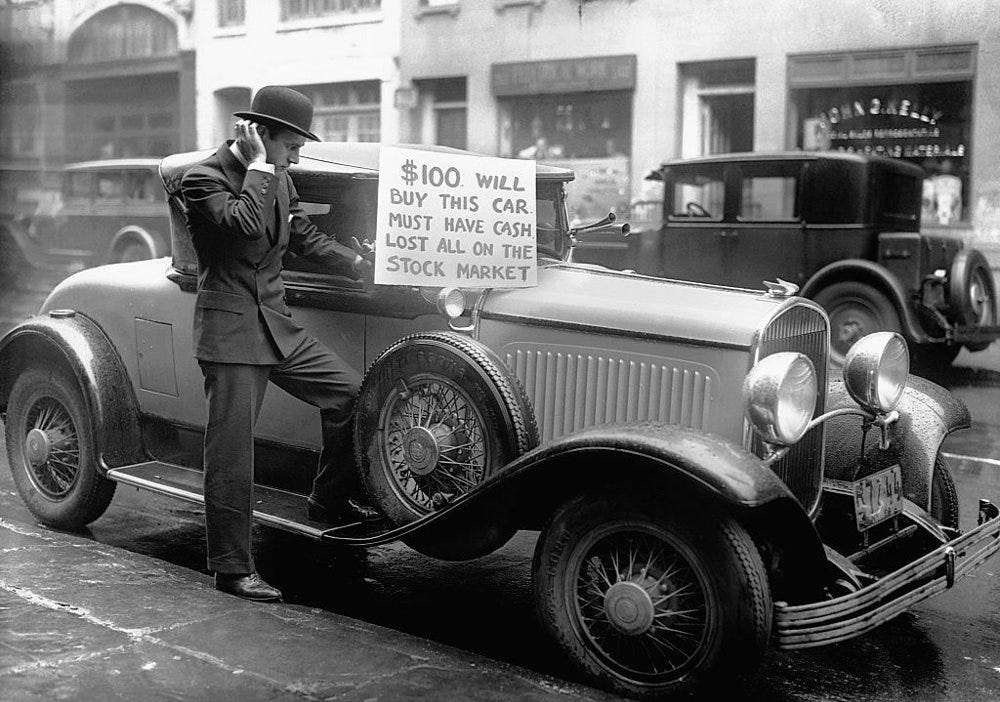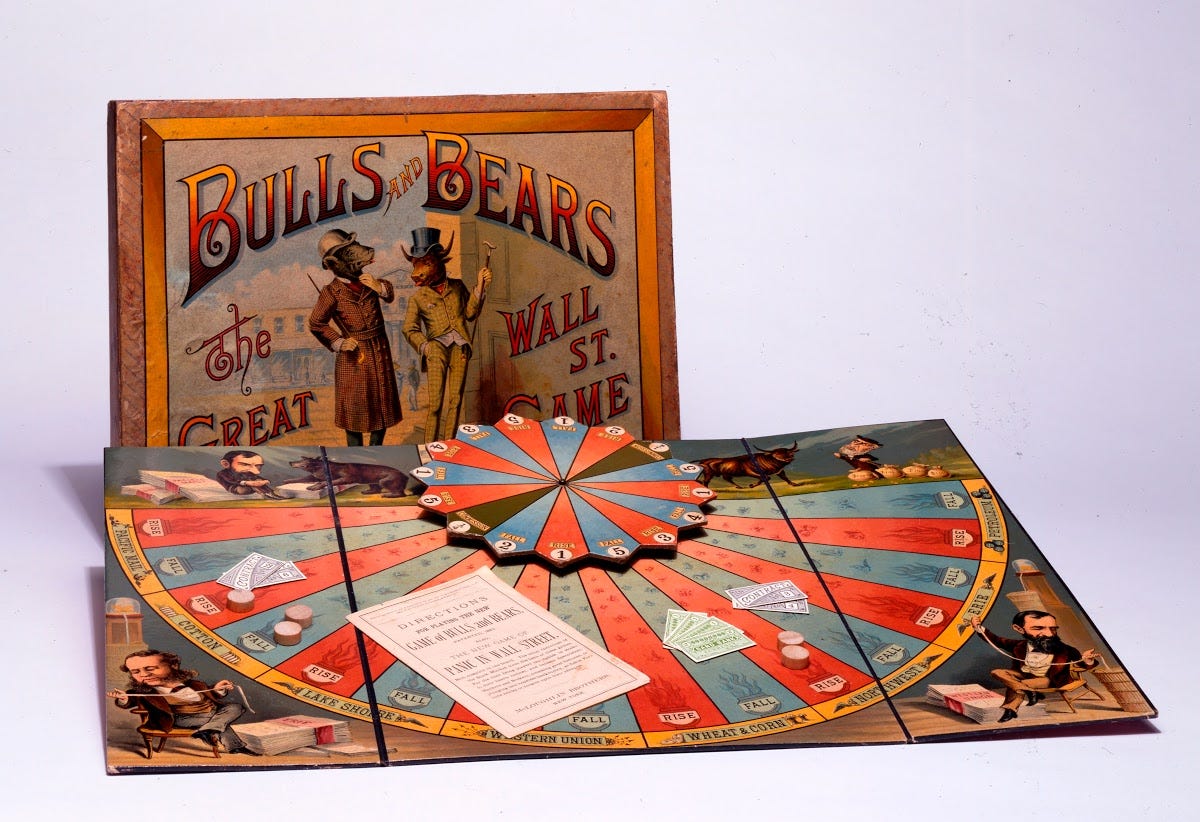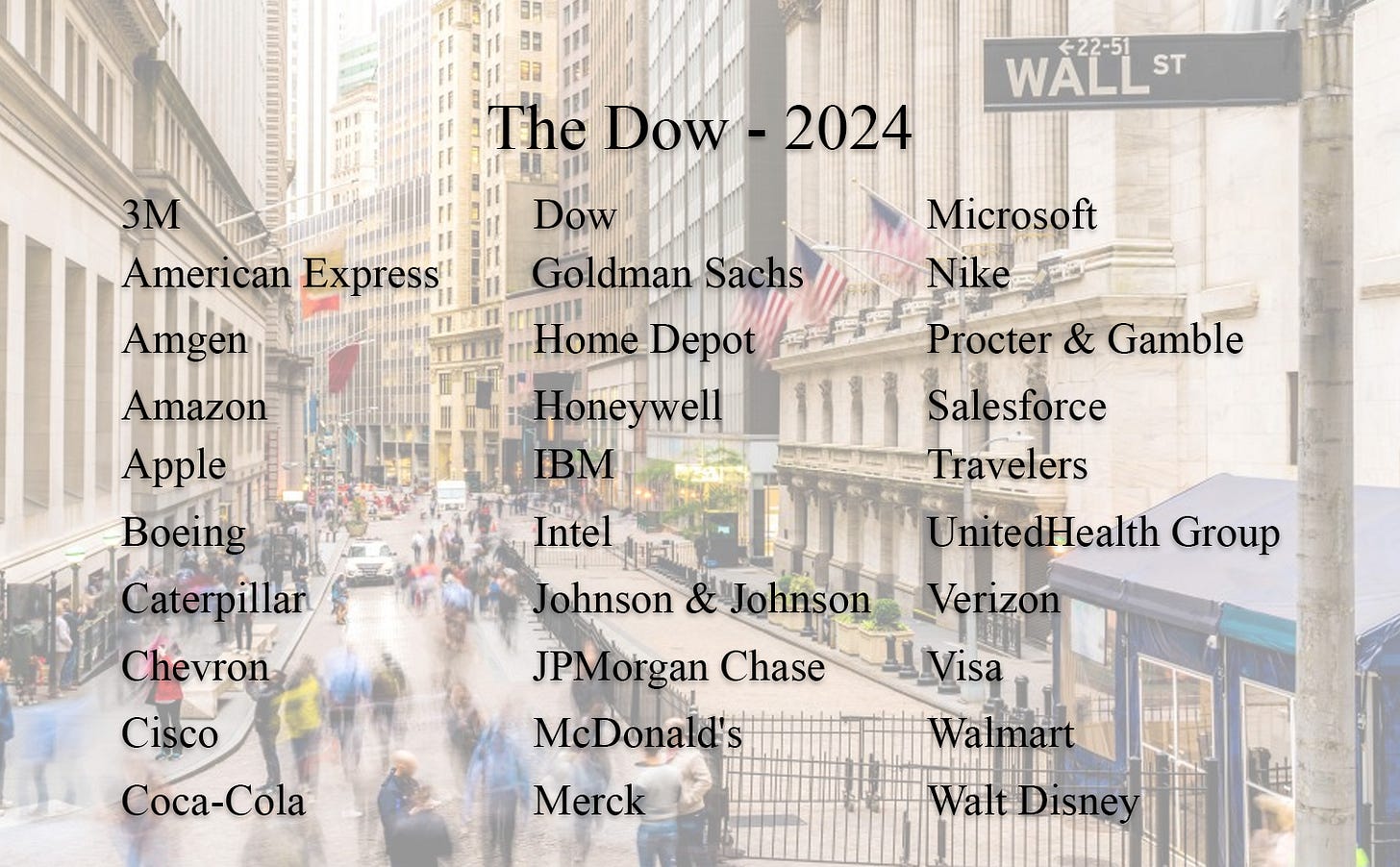The Dow (Core Post No 7)
A brief history of the stock market's most iconic index.
In July of 1884, if you wanted to calculate the average of eleven numbers, you would add them up and divide by 11, perhaps using pencil and paper or, possibly, using an arithmometer, the first digital mechanical calculator, patented by Thomas de Colmar in 1820.
We’re not sure what method Charles Dow used, but we do know that he calculated the average value of eleven stocks—mostly railroad stocks—and published them in the Customer’s Afternoon Letter, on July 3, 1884.
This index, now known as the Dow Jones Transportation Average, is the longest-running stock index in existence.
But it’s not what we’re here for.
We want to talk about the index Dow created twelve years later.
Dow Jones & Co.
Charles Dow, along with partners Edward Jones and Charles Bergstresser, founded Dow Jones & Co. in 1882. Their office was in a basement next to the New York Stock Exchange.
In 1889 the Customer’s Afternoon Letter was rebranded as The Wall Street Journal. It was Edward Jones (who ran the newsroom) who came up with the name.
Ironically, Jones (who is not related to the financial firm Edward Jones of today) had nothing to do with the creation of the index we’re about to talk about. Yet his name lives on as part of the most famous stock index in history. Meanwhile, Bergstresser— who bankrolled the early days of the company—did not see his name included, presumably because it was too long and the company name sounded better without it.
The Index
Charles Dow’s idea to calculate and publish a stock market index was intended to “take the temperature of the markets and, to an extent, the state of the economy.”
His decision to create a second index reflecting the most prominent industries of the day was based on his belief that publishing an index that focused almost exclusively on railroads did not give a complete picture.
So it was that on May 26, 1896, Dow Jones & Co. published the Dow Jones Industrial Average, based on the average price of the following 12 stocks, essentially the corporate Titans of the day:
Of the original twelve, General Electric is the only remaining independent company. The rest were either dissolved or merged into other companies.
A Price-weighted Index
Technically, the Dow Jones Industrial Average is a price-weighted index. Stocks with a higher share price make up a larger portion of the index but—unlike the S&P 500 and Nasdaq indexes—the size of the company does not matter. This is important and we’ll cover it in a future post.
Now, can you guess which stock currently accounts for the greatest percentage of the Dow—i.e., which Dow stock has the highest price? Read on to find out.
We should first point out that today it’s not quite as simple as taking the average of the stock prices of the constituents. When companies are added to or deleted from the index—or if there is a stock split, etc.—an adjustment has to be made (using something called a divisor) to keep things in sync.
As to the largest component of the index, you can check it at any time by Googling, “Dow Jones companies by weight.”
For now, we’ll save you the trouble and reveal that UnitedHealth Group is currently number one on the list, accounting for nearly 9% of the index, while Apple, which is currently the largest publicly traded company in the world, accounts for less than 4%.
A Brief Price History
The Dow, as originally constructed, opened at 40.49 when first published and gradually declined to 28.48 by August (largely due to the 1896 presidential election and some contentious debates about the Gold Standard).
The Dow topped the 100-point mark for the first time in 1906 and rose to a peak of 381.17 in September 1929, prior to the Wall Street Crash that ushered in the Great Depression.
By 1932, in the depths of the depression, the Dow had fallen 89% from its peak to a low of 41.22.
As the economy recovered, so too—eventually—did the Dow. The index first topped the 1,000 level in 1972 and hit 10,000 in 1999.
The Dow set a record high (as of the date of this post) of 43,275 on October 18, 2024.
The incredible increase in the price of the Dow reflects the Power of Compounding—i.e., the secret to investing—that we discussed in Core Post No 5.
Bulls and Bears
Just for fun, if one of your Victorian-era ancestors was interested in both the stock market and board games, they may have purchased a copy of Bulls and Bears - The Great Wall Street Game, patented in 1883.
If you happen to find a copy of the game tucked away in some dusty corner of your attic, you’re in luck. In 2018, a copy of the game sold for $20,740 at auction!
From 12 to 30
In 1928, the editors of The Wall Street Journal expanded the Dow from 12 to 30 stocks. Today, a committee reviews and makes periodic changes to the Dow in order to have the index reflect the prominent businesses of the times. The most recent change occurred in February 2024 when Amazon replaced Walgreens Boots Alliance in the index.
The current list of the 30 Dow stocks is as follows:
Reporting the Dow
You will have no doubt noticed that when the daily stock market results are reported, you’ll hear things like, “The Dow was up 200 points,” or, “The Dow was down 100 points.”
It makes no sense to report the Dow—or any other index—in terms of a point change. It would be far more useful to report the percentage change.
On “Black Monday,” October 19, 1987, the Dow dropped 508 points, a staggering 22.6% decline in a single day.
Today a drop of 508 points would represent a loss of just over 1%, a relative shrug of the shoulders in the daily life of the Dow.
Why report it this way? In short, it’s deemed more newsworthy, i.e., it’s more of an attention-grabber which, after all, is the primary intent of financial reporting.
As we’ve noted previously, what happens in the stock market on a day-to-day basis has little effect on the long-term results—the long-term compounding rate—that is most important to long-term investors.
Daily stock market returns are, at best, a distraction and, at worst, can lead people to costly overreactions.
Is There a Better Index?
The goal of this post was to simply introduce the Dow, given its iconic stature. But, is there a better index?
Yes, there is and we’ll cover it in our next post.
Stuart & Sharon



